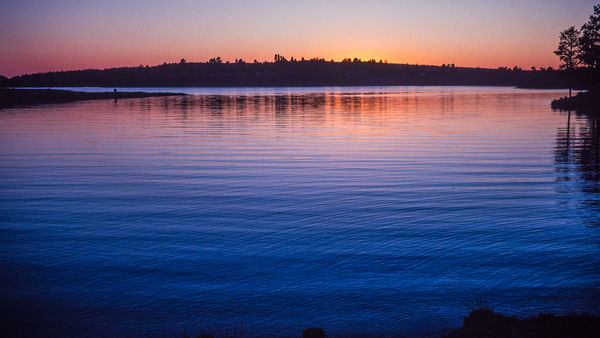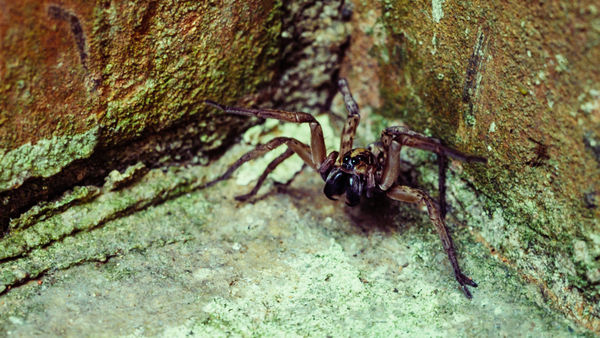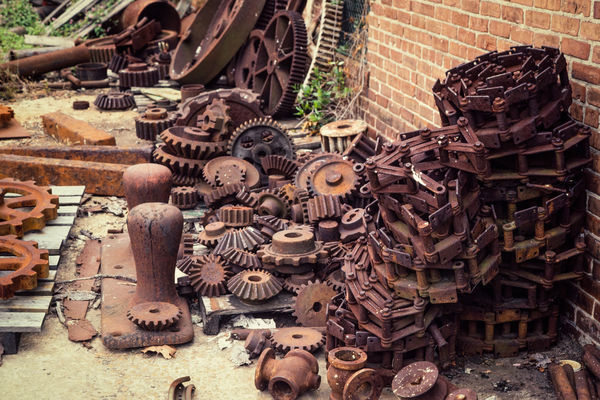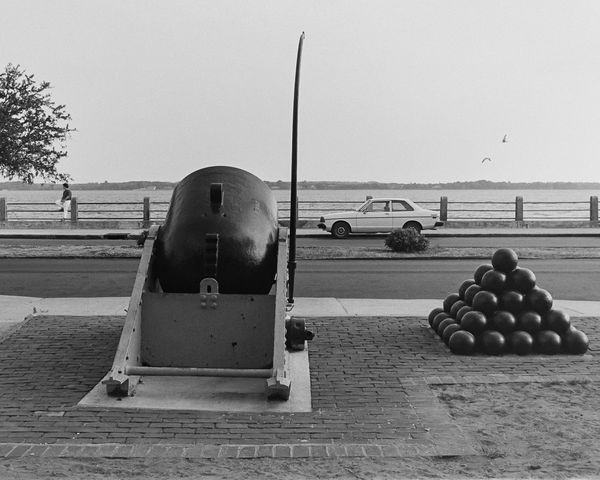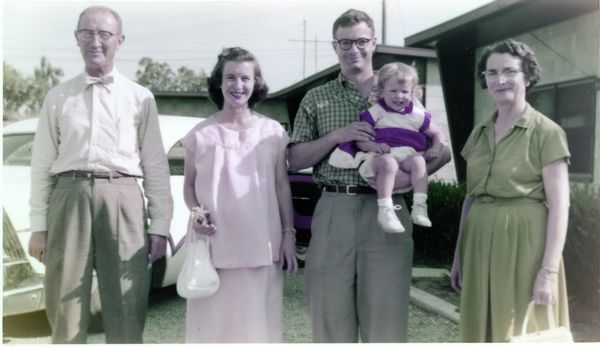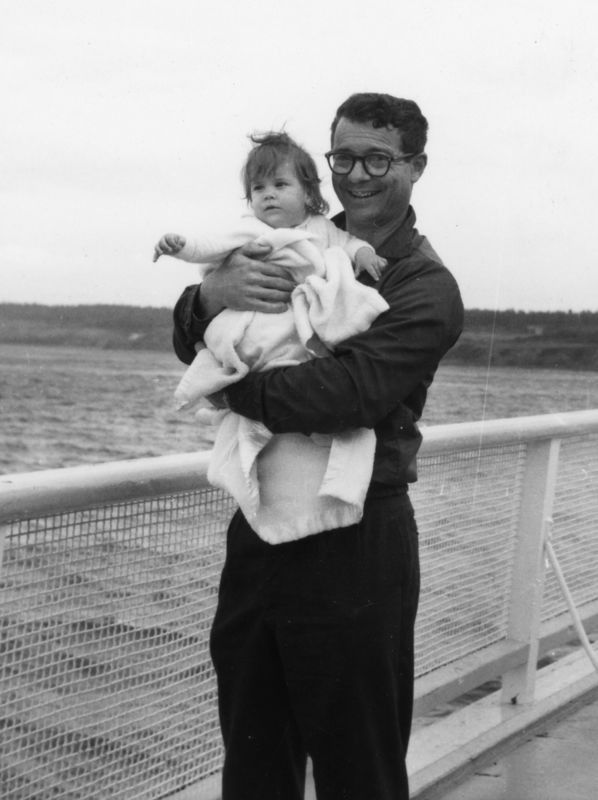35mm slides
Jul 22, 2018 09:47:45 #
Depending upon how many slides you have, I would strongly recommend you buy a film scanner. You can get one pretty cheap from Amazon. I had over 5,000 slides and negatives from all my days in the 35mm era. Took a few months, but I got them all converted to digital. The scanner I bought was "Jumbl". It cost around a hundred bucks and the thing was a breeze to use. You don't have to have it connected to your computer as it uses an SD card to store the scans. I was surprised at well it scanned and the sharpness and color of the images. I just sat in my LazyBoy and started cranking through them. After a hundred or so, I would plug the SD card into the computer and downloaded the images just like from your camera. Once in the computer I added any title and date information for easy searching. You should really do this, as the memories are well worth the hundred bucks.
Jul 22, 2018 10:02:40 #
FlyGuy47 wrote:
Had lunch with one of my sisters and at lunch she handed me a box filled with 35mm film slides. All are mounted and ready to view; however I do not have a viewer. Suggestions, anyone? Only want to view them for now. Fortunately our dad had the foresight to make notes on each slide holder and each smaller box of slides has a date or dates.
You can simply buy a handheld backlit viewer. Look on eBay and Amazon. My father did the same thing and when he passed we found some vintage viewers that needed bulbs and batteries. Luckily my father had the foresight to remove the batteries before storing the viewers or no doubt they'd be totally ruined by the batteries. My sister and I had two long visits where we went the all the slide together and narrowed down our choices to about 110 slides that we really liked. So I sent those to a lab that digitized them for us for about a buck each. I've put them up on a Drop Box site where everyone in the family can enjoy. I printed all of them on 4x6 paper and plan to have a small get together soon so that we (my siblings and I) can go back in time as we pass the pictures around. It's much different to actually hold and see a picture than it is to browse them on a computer screen.
Jul 22, 2018 10:08:55 #
burkphoto wrote:
It would be heathen not to! You can keep the slides, and ACTUALLY USE the digital files.
Using the right copy setup — digital camera, macro lens, and photo-grade, full-spectrum light source — results are astounding.
Using the right copy setup — digital camera, macro lens, and photo-grade, full-spectrum light source — results are astounding.
To each his own.
Jul 22, 2018 10:34:28 #
burkphoto wrote:
It would be heathen not to! You can keep the slides, and ACTUALLY USE the digital files.
Using the right copy setup — digital camera, macro lens, and photo-grade, full-spectrum light source — results are astounding.
Using the right copy setup — digital camera, macro lens, and photo-grade, full-spectrum light source — results are astounding.
So true to convert. The slides will relatively soon be gone and clear bits of deteriorated film. Once digitized they can easily be preserved indefinitely as technology advances.
Jul 22, 2018 12:07:46 #
Architect1776 wrote:
So true to convert. The slides will relatively soon be gone and clear bits of deteriorated film. Once digitized they can easily be preserved indefinitely as technology advances.
Here are some sample slides I converted. Any lack of sharpness was in the originals. All three were made on Kodachrome 64 between 1978 and 1984. All three were made hand-held at 1/30 second with a Nikon FTn and either a 35mm f/2.8 or a 55mm f/3.5 Micro Nikkor. All three were probably wide open apertures, as they were exposed near dusk.
The same rig (Lumix GH4 with 30mm f/2.8 Lumix Macro lens, home-built copy rig, photo grade CFL light source diffused through several sheets of vellum) is used to make copies of B&W negatives, too. They print BETTER on my inkjet printer than on my old enlarger.
Back in the 1980s, I was a multi-image AV producer for a school photography and yearbook company (Delmar). I had a decently high-end slide duplication setup. The light source was a Beseler 4x5 color head, inverted, with a special vernier control slide holder that could move slides or bare film chips in holders in two dimensions (L-R, U-D) in 0.001" increments. The camera was a pin-registered Nikon F3 mounted on a special rail stand. I used a bellows with a 60mm Bogen enlarging lens left over from a Bowens Illumitran 3C setup. My assistants and I composed and duplicated thousands of slides with those setups. The knowledge gained from that was invaluable to me as I built my home-brew setup from a bunch of junk.
Jul 22, 2018 12:12:54 #
Jul 22, 2018 12:52:47 #
burkphoto wrote:
Here are some sample slides I converted. Any lack ... (show quote)
Do you reverse the enlarging lens? I don't just because it's difficult for me to do so but I keep wondering if I get better sharpness doing so.
Jul 22, 2018 13:11:32 #
BebuLamar wrote:
Do you reverse the enlarging lens? I don't just because it's difficult for me to do so but I keep wondering if I get better sharpness doing so.
I never did. The lens I used back then was super sharp, either way. Now, I use a 1:1 macro on Micro 4/3, which is like using a 2:1 on full frame. I can copy a section 17mm wide.
Jul 22, 2018 13:24:34 #
burkphoto wrote:
I never did. The lens I used back then was super sharp, either way. Now, I use a 1:1 macro on Micro 4/3, which is like using a 2:1 on full frame. I can copy a section 17mm wide.
I have the Nikon PB-6 and and adapter to mount 39mm thread mount lenses on it. I have several enlarging lens with a Nikkor 50mm f/2.8, 80mm f/5.6. Rondenstock 105mm f/5.6 etc..
Jul 22, 2018 13:50:12 #
BebuLamar wrote:
I have the Nikon PB-6 and and adapter to mount 39mm thread mount lenses on it. I have several enlarging lens with a Nikkor 50mm f/2.8, 80mm f/5.6. Rondenstock 105mm f/5.6 etc..
Yeah, that’s a good range to use! I have an EL-Nikkor 50mm f/2.8 (version 1) and the Bogen 60mm. I never reversed either.
I would love to find a bellows unit with 39mm ring on the front, and Micro 4/3 Mount on the rear, but need to look harder for it.
Jul 22, 2018 14:01:38 #
you can buy a slide viewer or small batt. op light table for $20.00 at most photo stores.Unless you have hundreds of slides to view that's the way I would go.
Jul 22, 2018 16:16:22 #
You have so many options on your plate ,so I will keep mine ,it is twenty years since I viewed them
Jul 22, 2018 16:21:33 #
IBM wrote:
You have so many options on your plate ,so I will keep mine ,it is twenty years since I viewed them
Make that 40 years OR MORE 1965 to 1975
Jul 22, 2018 17:11:13 #
burkphoto wrote:
Here are some sample slides I converted. Any lack ... (show quote)
Nice digitizing.
Here is an example of a slide that was nearly clear that I scanned with the Epson V750 that it worked hard to restore an image and color. I was amazed I got anything.
Also a B&W negative from the same era that is as good as the day it was developed.
Scan, duplicate whatever those slides before they are gone. These slides were stored in the dark, dry (Glendale, AZ) and seldom viewed.
Jul 22, 2018 17:33:10 #
Architect1776 wrote:
Nice digitizing.
Here is an example of a slide that was nearly clear that I scanned with the Epson V750 that it worked hard to restore an image and color. I was amazed I got anything.
Also a B&W negative from the same era that is as good as the day it was developed.
Scan, duplicate whatever those slides before they are gone. These slides were stored in the dark, dry (Glendale, AZ) and seldom viewed.
Here is an example of a slide that was nearly clear that I scanned with the Epson V750 that it worked hard to restore an image and color. I was amazed I got anything.
Also a B&W negative from the same era that is as good as the day it was developed.
Scan, duplicate whatever those slides before they are gone. These slides were stored in the dark, dry (Glendale, AZ) and seldom viewed.
Nice. Faded slides really are difficult to scan or copy. Sometimes you can improve the balance of color, contrast, and saturation, but you can’t put back what’s gone.
Most B&W negs are silver metal embedded in a gelatin emulsion on plastic film. If they were processed in fresh chemistry, fixed properly, and washed thoroughly, they’re good for decades. I have a few old negs from the early 1930s and WWII era that scan or copy beautifully.
If you want to reply, then register here. Registration is free and your account is created instantly, so you can post right away.



